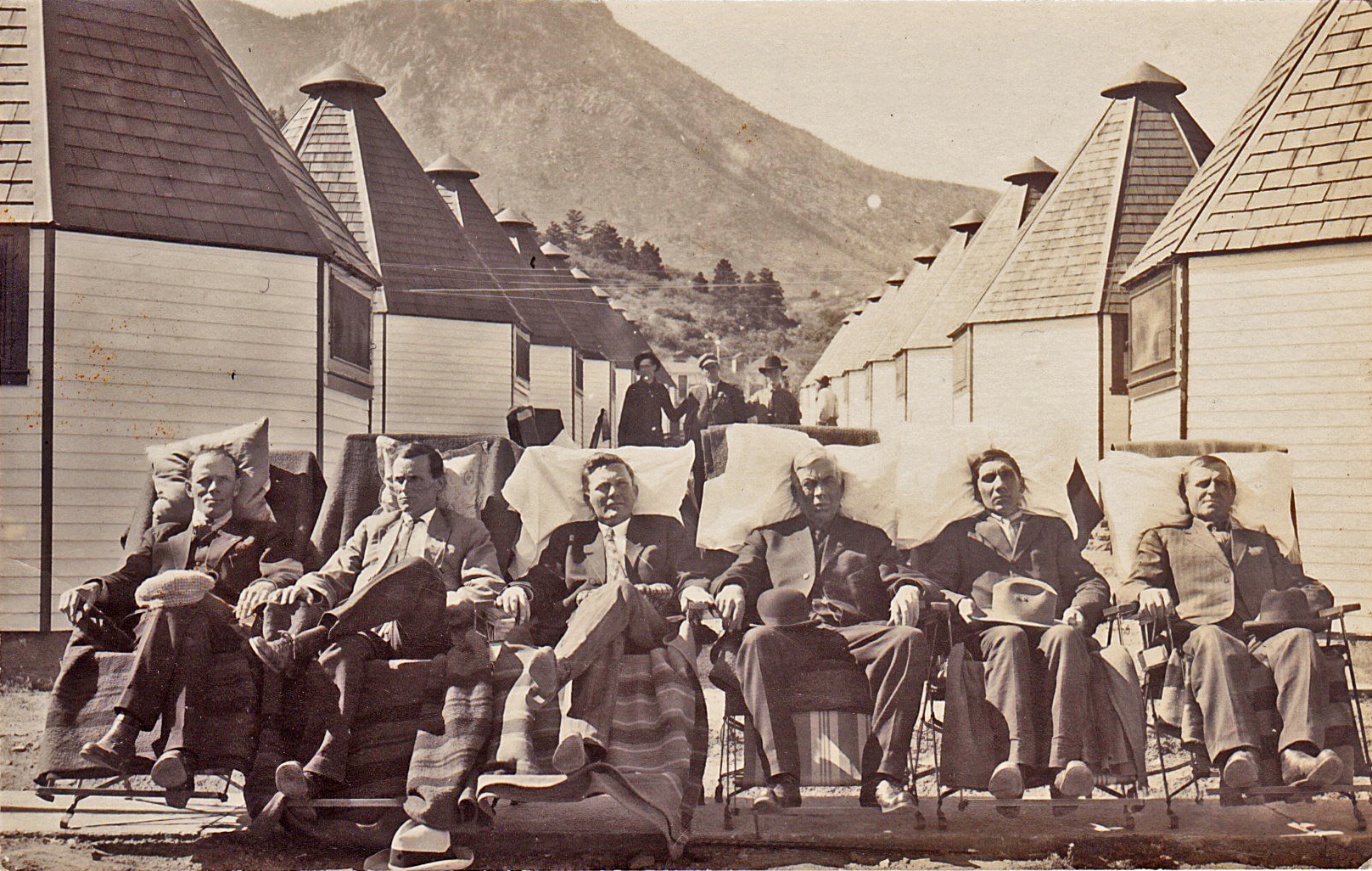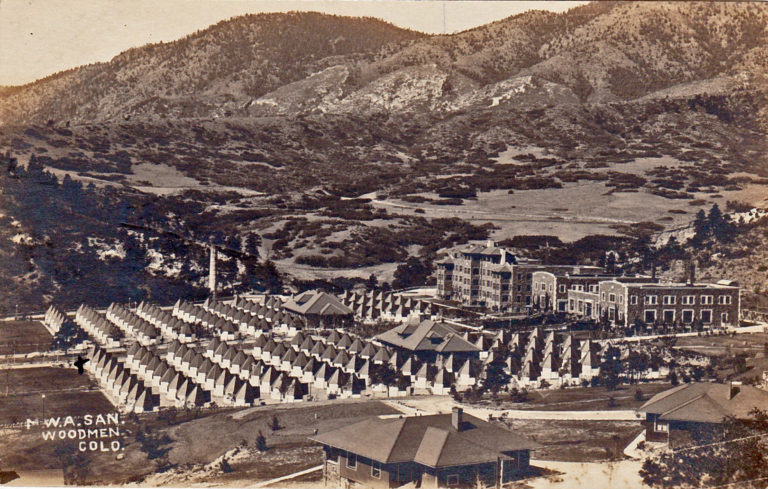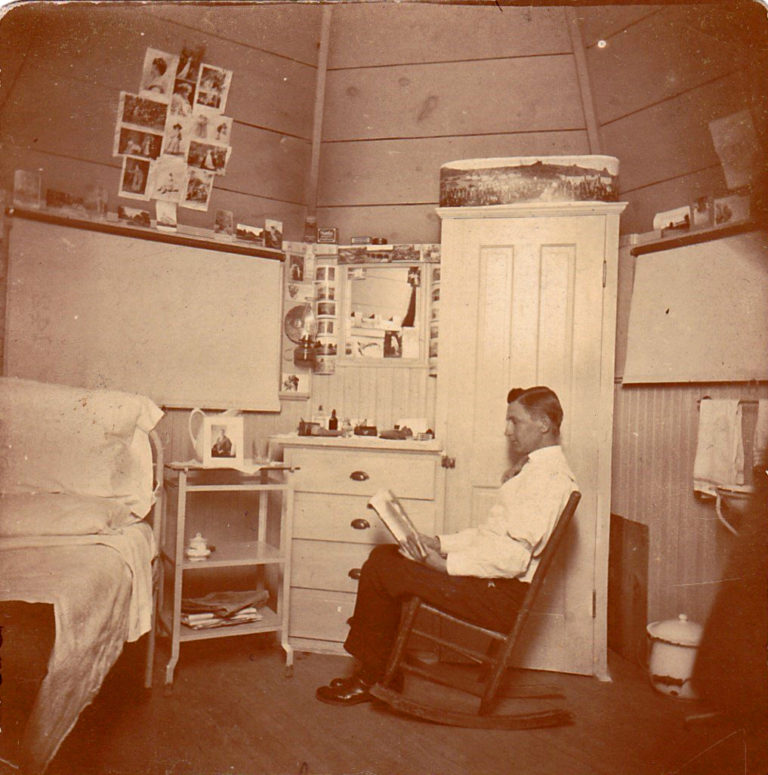A man named J. P. Watson inscribed the back of this postcard “To Mr. and Mrs. Tilleygard. “ He also writes, “The sun was to(o) bright.” It’d be interesting to know which of these individuals is Mr. Watson.
In the late 19th and early 20th century, Americans with tuberculosis flocked to arid climates and higher altitudes, such as those found in Colorado, on the premise that the fresh dry air and lower oxygen content at higher altitudes would inhibit the growth of the tuberculosis bacteria. These conditions were combined with exercise and plentiful food intake.
Arrayed behind the men are some of the sanatorium’s one-person residential huts, octagonal in shape and capped by conical roofs. Although constructed of wood, they were referred to as “cottage tents.” There may have been as many 180 of these. The men standing in the background are probably fellow residents.
REFERENCE:
- “Tuberculosis and High Altitude. Worth a Try in Extensively Drug-Resistant Tuberculosis?” American Journal of Respiratory and Critical Care Medicine, November 20, 2013 at https://www.atsjournals.org/doi/full/10.1164/rccm.201311-2043OE .



